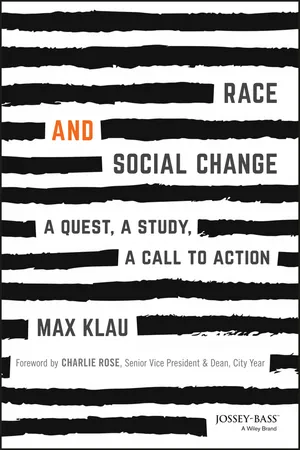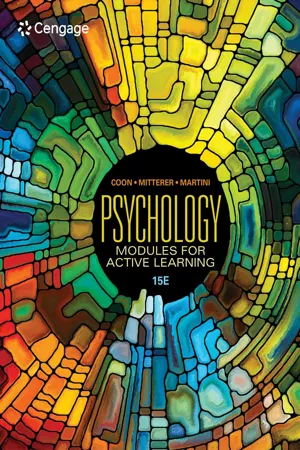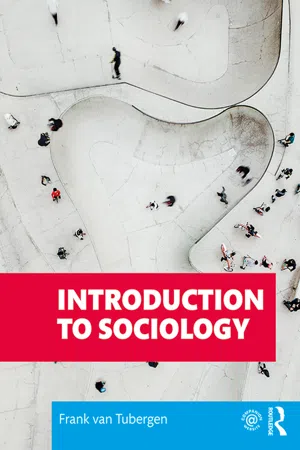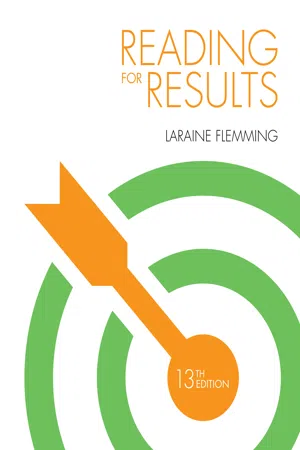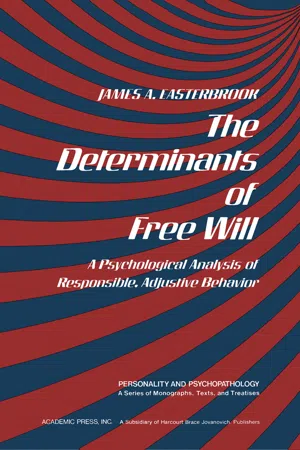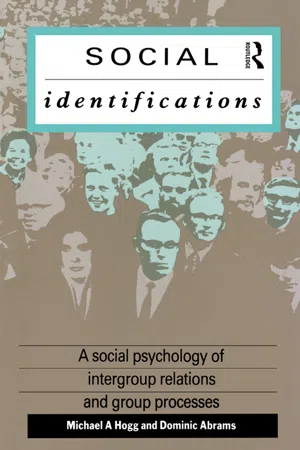Psychology
Asch Conformity Experiments
The Asch Conformity Experiments were a series of studies conducted by psychologist Solomon Asch in the 1950s. The experiments demonstrated the power of social influence and conformity, showing that individuals often yield to group pressure, even when they know the group is wrong. The findings have had a significant impact on our understanding of social behavior and group dynamics.
Written by Perlego with AI-assistance
Related key terms
1 of 5
10 Key excerpts on "Asch Conformity Experiments"
- eBook - ePub
Race and Social Change
A Quest, A Study, A Call to Action
- Max Klau(Author)
- 2017(Publication Date)
- Jossey-Bass(Publisher)
Still, the Milgram experiment endures as an infamous and iconic undertaking in the history of the social sciences. To this day, it challenges us to think deeply about our own tendencies to obey authorities even when confronted with demands that fly in the face of our own moral code and ethical standards.Solomon Asch's Conformity Experiments
In the early 1950s, social psychologist Solomon Asch (1951) set out to explore the dynamics of conformity. Similar to Milgram, he felt compelled to understand the powerful ways that ordinary individuals are influenced by their interpersonal relationships—in this case, with peers:Our immediate object was to study the social and personal conditions that induce individuals to resist or yield to group pressures when the latter are perceived to be contrary to fact. The issues which this problem raises are of obvious consequence for society; it can be of decisive importance whether or not a group will, under certain conditions, submit to existing pressures. (p. 177)In his experiment, Asch gathered a group of eight individuals and asked them to take a simple perceptual test. In this case, the task was to view flashcards presenting a series of lines; participants were asked to identify which of the last three lines of various lengths perfectly matched the length of the first line on each flashcard. The subject of the experiment was unaware, however, that all seven of the other individuals involved were actually collaborators who were part of the experiment. On multiple occasions, the seven individuals unanimously asserted that a line that was clearly too long or too short was the line that matched the length of the first line. The subject was then placed in the position of having to either deviate from the group by saying what he or she perceived to be the correct answer or make the choice to ignore the evidence of his or her own senses in order to conform to the group. In his original experiment, Asch found that more than 30% of participants chose to conform to the group, suggesting that roughly one out of every three people would make statements that they did not believe to be true rather than risk standing alone in their responses. - eBook - ePub
Psychoanalysis, Classic Social Psychology and Moral Living
Let the Conversation Begin
- Paul Marcus(Author)
- 2019(Publication Date)
- Routledge(Publisher)
Seder (a ritual service and ceremonial dinner for the first night in Israel or first two nights of Passover in the diaspora). He saw his grandmother pour an extra glass of wine in a ceremonial cup and asked whom it was for. “For the prophet Elijah” (who heralds the messiah), an uncle told him. “Will he really take a sip?” the little boy asked. “Oh, yes—you just watch when the time comes,” the uncle replied. Excited with the sense of suggestion and expectation, Asch was convinced that he “saw the level of wine in the cup drop just a bit.” It was this experience that sensitized him to the power of social pressure and conformity (Stout, 1996, n.p.).Asch thus orchestrated an elegantly simple experiment to explore the extent to which social pressure from a majority group could influence a person to conform.1 In social psychology, conformity is defined as “the convergence of individual’s thoughts, feelings, or behavior toward a group norm” (Smith et al., 2015, p. 315). The original study, along with select follow-up studies, are summarized herein.Asch used fifty male students from Swarthmore College to participate in a “‘psychological experiment’ in visual judgment” (Asch, 1955, p. 32). Using a line judgment task, Asch situated a naïve subject (the “real” participant) in a room with seven confederates, whom had consented, prior to the line task presentation, to what their responses would be. The naïve subject was not aware of this and was made to believe that the seven confederates were real participants like they were. Each person in the room had to articulate aloud which comparison line on the large white cards (A, B or C) was most similar to the standard line. The correct answer was always entirely obvious. The naïve subject sat at the end of the row of chairs and provided his or her answer last. There were 18 trials altogether, and the confederates gave the incorrect answer on 12 trials (i.e., the “critical trials”). Asch wanted to discern if the naïve subject would conform to the view of the majority. He also had a control condition that excluded any naïve subjects, only real participants. The results were astonishing. About one-third of the naïve subjects acquiesced and conformed to the obviously incorrect majority on the critical trials. Moreover, during the critical trials, about three-quarters of naïve subjects conformed on at least one occasion and one-quarter never conformed. In the control group, less than 1% of the naïve subjects gave the incorrect answer (Asch, 1951; McLeod, 2008). - eBook - PDF
Psychology
Modules for Active Learning
- Dennis Coon, John Mitterer, Tanya Martini, , Dennis Coon, John Mitterer, Tanya Martini, (Authors)
- 2021(Publication Date)
- Cengage Learning EMEA(Publisher)
The broadest norms, defined by society as a whole, establish “normal” or acceptable behavior in most situations. Com-paring hairstyles, habits of speech, dress, eating habits, and social customs in two or more cultures makes it clear that we all conform to social norms. In fact, a degree of uniformity is necessary if we are to interact comfortably. Imagine being totally unable to anticipate the actions of others. In stores, schools, and homes, this would be frustrating and disturb-ing. On the highways, it would be lethal. The Asch Experiment How strong are group pressures for conformity? One of the first experiments on conformity was staged by Solomon Asch (1907–1996). To fully appreciate it, imagine yourself as a participant. Assume that you are seated at a table with six other students. Your task is actually quite simple: You are shown three lines on a card, and you must select the line that matches a “standard” line ( ➤ Figure 71.1 ). As the testing begins, each person announces an answer for the first card. When your turn comes, you agree with the others. “This isn’t hard at all,” you say to yourself. For several more trials, your answers agree with those of the group. Then comes a shock. All six people announce that line 1 matches the standard, and you were about to say line 2 matches. Suddenly you feel alone and upset. You nervously look at the lines again. The room falls silent. Everyone seems to be staring at you. The experimenter awaits your answer. Do you yield to the group? In this study, the other “students” were all actors who gave the wrong answer on about a third of the trials to (a) (1) Standard Line Comparison Lines (3) (2) ➤ Figure 71.1 Stimuli used in Asch’s conformity experiments. Copyright 2022 Cengage Learning. All Rights Reserved. May not be copied, scanned, or duplicated, in whole or in part. Due to electronic rights, some third party content may be suppressed from the eBook and/or eChapter(s). - eBook - PDF
Psychology
Selected Papers
- Gina Rossi(Author)
- 2012(Publication Date)
- IntechOpen(Publisher)
For example, homosexuals often conform to the norms of the group they belong to but turn out to be non-conformist compared with the remaining society of heterosexuals. Reference to homosexuals enables us to remember how, next to the influence of the majority, precisely in the studies of Asch, there is also an influence of the minority (Moscovici, 1976). Assigning a central role to social conflict, the minority, as for example illustrated by the history of the homosexual movement, have shown that it is possible to induce a change in the majority. 3. Obedience If for the studies of Asch we can speak of a conformism in words the research conducted by Stanley Milgram (1974) on obedience describes instead how conformity comes to involve conduct. Obedience is a particular form of conformity: it manifests itself when the “majority” is not a quantitative dimension but qualitative. At the bottom of this there is a difference of status: the one who exercises a power superior to others operates a direct explicit pressure on them, who adapt to his will. 3.1 Immoral orders and dilemmas of conscience “We will pay you $4.00 for one hour of your time. People needed for a study of memory”. With this announcement published in a local newspaper participants were recruited to the first of a series of experiments which signalled the story of social psychology (Milgram, 1974). Those who had responded to the announcement were invited to a laboratory to carry out actions which became more and more in contrast with their moral conscience. What interested the experimenters was to understand to what point the participants would obey Psychology – Selected Papers 280 to orders and when or how they would rebel. To make the prearranged situation credible a particular strategy was used: staging an experiment which had as its fictitious objective the study of processes of memory and learning; two participants were assigned the roles of teacher and learner. - eBook - ePub
- Frank van Tubergen(Author)
- 2020(Publication Date)
- Routledge(Publisher)
why they conformed to the majority group and gave wrong estimates (Asch, 1956, 1961). Roughly speaking, the participants gave two kinds of answers. One group of subjects answered that they thought they must have misperceived the length of the line in some way, and hence followed the group opinion. Therefore they believed the group was right and their own judgment was wrong. The other group of subjects, however, believed they had it right personally, hence they did not agree with the group. Nevertheless, they conformed to the group judgment—so they adjusted their behavior—because they feared social disapproval when they stated their own opinions publicly.In a follow-up study to the work of Asch, Deutsch and Gerard argued that these two kinds of responses by the subjects of the Asch experiment reflect two mechanisms which can explain positive social influence (Deutsch & Gerard, 1955). First, there is what they call informational social influence , which they defined as “influence to accept information obtained from another as evidence about reality”. Second, there is normative social influence , which is “influence to conform to the positive expectations of another”. This kind of influence is based on the desire to receive social approval from peers, and to avoid social sanctions and punishment from the group when not conforming to the social norms. Thus, in the Asch experiment, subjects who believed they were right and others were wrong might have decided to conform to the beliefs of others and thereby avoid possible negative sanctions of the others in the classroom. In this case, beliefs about reality—factual statements—are normative, i.e., statements in the form of “X is true” are not neutral but normative and not agreeing with them can have social consequences. Sociologists have developed the social control theory around this idea and applied it to numerous social phenomena. In Chapter 6 - eBook - PDF
- Laraine Flemming(Author)
- 2016(Publication Date)
- Cengage Learning EMEA(Publisher)
What evidence do the authors offer for the following claim? “Daily behavior is probably most influenced by group pressure for conformity.” Evaluating Arguments Open your paper by briefly summarizing the experiment conducted by Solomon Asch. Then use a transitional sentence like the following to move the reader to the second part of your paper. If you agree with the results of Asch’s experiment, your transitional sentence would be something like this: “Solomon Asch’s experiment highlights a com-mon tendency in human nature, a tendency I can attest to from per-sonal experience.” If you think the results of Asch’s experiments do not fit your experience, use a transitional sentence like this one: “The tendency to conform to the ideas of the group may have been strong in 1956, but I’m not so sure that is true today.” Make the second part of your paper focus on one or two experi-ences that do or do not fit the conclusions social psychologists have drawn from Asch’s experiment. From Reader to Writer Social Influence: Follow the Leader ● 751 Copyright 2017 Cengage Learning. All Rights Reserved. May not be copied, scanned, or duplicated, in whole or in part. Due to electronic rights, some third party content may be suppressed from the eBook and/or eChapter(s). Editorial review has deemed that any suppressed content does not materially affect the overall learning experience. Cengage Learning reserves the right to remove additional content at any time if subsequent rights restrictions require it. © Laraine Flemming. All rights reserved. No distribution allowed without express authorization. WEB QUEST Use the Web to identify one or more criticisms that have been leveled at Asch’s results. 752 ● Reading 2 Copyright 2017 Cengage Learning. All Rights Reserved. May not be copied, scanned, or duplicated, in whole or in part. Due to electronic rights, some third party content may be suppressed from the eBook and/or eChapter(s). - eBook - PDF
The Determinants of Free Will
A Psychological Analysis of Responsible, Adjustive Behavior
- James A. Easterbrook, David T. Lykken(Authors)
- 2013(Publication Date)
- Academic Press(Publisher)
In each of these cases, going along with the group becomes more common as the size of the group increases. It is quite clear in these instances, however, that we can only speak of such behavior as conformity at the price of regarding ethical behavior as nonconformity. What is at issue is the standard to which behavior conforms or does not conform. Two kinds of conformity can be discerned in the Asch experiments, which differ only in the criteria they meet. The yielder's response defers to two pos-sibilities: first, that his own judgment may be wrong, second, that the others may be playing some kind of game as a group. The yielder's response is thus self-consciously biased toward the appearance of either being as good a judge as the others or of being a member of the same group as they. The résister's response is not influenced by these possibilities. If he recognizes them, he does not believe the first, and, on the second, is less concerned about appearing like others than about truth or objectivity—that is, about responsibly producing a match between what he says or does and what is true of, or appropriate to, the object of his statement or action. The importance of this contrast in criteria to the present discussion is clear. One who shapes his behavior for its appearance is not only treating others as supervisors, obediently, he is also either disregarding the effects of his actions or assuming that the others have the effects under control. In either case, he is abdicating his own responsibility for them, his own control over them. In another context, it has been suggested that responsibility is diffused in groups (Wallach, The Compliant Disposition 99 Kogan, & Bern, 1964). This is a reasonable proposition, but only to the degree that individuals in groups cease to be concerned with the effects of their actions. They might continue to act responsibly either if they persuaded the group to do the correct thing or if they changed their ideals. - eBook - ePub
Social Psychology
How Other People Influence Our Thoughts and Actions [2 volumes]
- Randal W. Summers(Author)
- 2016(Publication Date)
- Greenwood(Publisher)
http://abcnews.go.com/GMA/story?id=7213714&page=1 .Columbia University Libraries. “Mamie Clark.” Notable New Yorkers, 2006. Retrieved from www.columbia.edu/cu/lweb/digital/collections/nny/clarkm .Proulx, M. G. “Professor revisits Clark doll tests.” The Harvard Crimson, 2011. Retrieved from www.thecrimson.com/article/2011/12/1/clark-dolls-research-media .1951—Conformity, Solomon AschSolomon Asch was a psychology professor for 19 years at Swarthmore College, near Philadelphia, Pennsylvania. While there, he conducted what is now considered a classic experiment on conformity (our desire to be like others or follow social norms).It has been noted that when people have to make a judgment about something that is ambiguous or unclear, they will use other people’s opinion as a reference point. In other words, if you are unsure of something, ask someone. Their opinions obviously influence ours. Solomon Asch posed a question about how we are influenced by others when something is very unambiguous or clear. The logical answer would be that people can make a judgment by themselves just fine. However, in Asch’s experiment, this was found not to be the case. Even when stimuli were quite evident, subjects ignored their own perception and conformed to that of others.In his study, 50 male students were invited to participate. The basic design was that a subject would be seated with seven others who were confederates. These were not real subjects and were instructed before the experiment to give an incorrect answer when shown the visual stimuli. The real subject was shown a card (a) with a vertical line on it and another card (b) with three vertical lines on it. Everyone was asked to find the line on (b) that matched the line on (a).The confederates all selected the wrong answer despite the task being fairly obvious. When 32 percent of the participants (real subjects) were shown the cards, they conformed to the opinion of the confederates and gave the wrong answer. Subjects were interviewed after the experiment, and most of them said they knew their answer was wrong but had gone along with the group to avoid being ridiculed or thought to be different, “peculiar.” Only a few subjects believed that the group’s answers were correct. The results suggested that even when facts are obvious, group pressure can change one’s opinion. - eBook - ePub
Social Identifications
A Social Psychology of Intergroup Relations and Group Processes
- Dominic Abrams, Michael A. Hogg(Authors)
- 2006(Publication Date)
- Routledge(Publisher)
No theoretical link is made between conformity and normative behaviour or group belongingness. And yet norms, as prescriptive consensuses, are heavily implicated in conformity: factors which enhance conformity (e.g. the unanimity of the majority, the criteriality of the behaviour to the group’s existence, that the group need only contain sufficient members for a clear consensus to be perceived) all contribute to the normative clarity of the group’s behaviour, and to the prescriptive relevance of the behaviour to the individual. The anaysis of conformity as adherence to norms, or as normative behaviour, cannot simply be conjured out of a collection of separate interpersonal processes. Recently, however, norms have once again been brought centre-stage, initially by Moscovici and Faucheux, who reinterpret the Asch paradigm as an exercise in minority influence rather than conformity of an individual to a majority (Moscovici and Faucheux 1972). They remind us that no experiment occurs in a social vacuum divorced from the effect of the subjects’ extra-experimental real-life experiences (Tajfel 1972c). The subjects in the Asch paradigm are not faced by an erroneous majority but rather by an erroneous minority which makes judgements of line length that are starkly at variance with the judgements people reliably make in the real world. The experimental group norm is at odds with the real-world norm brought to the experiment by the subjects, and the explanation of conformity must rest upon an examination of why some subjects choose the experimental group norm to determine their behaviour rather than the real-world norm. Moscovici and Faucheux have essentially stood the Asch paradigm on its head and reminded us, in Cooley’s words, that ‘the one who seems to be out of step with the procession is really keeping time to another music’ (Cooley 1902:301) - Murray Webster, Jane Sell(Authors)
- 2007(Publication Date)
- Academic Press(Publisher)
It is valuable in many ways, but one of its values is directly proportional to the value of meeting the primary chal-lenge that faces the theory-oriented experiment––achieving analytic simplifica-tion and internal validity while also achieving experimental realism and external validity. REFERENCES Allen, V. L. (1965). Situational factors in conformity. Advances in Experimental Social Psychology, 2, 133–175. Allen, V. L. (1977). Social support for nonconformity. Advances in Experimental Social Psychology, 8, 1–43. Asch, S. E. (1951). Effects of group pressure upon the modification and distortion of judgments. In H. Guetzkow (Ed.), Groups, leadership, and men (pp. 177–190). Pittsburgh: Carnegie Press. Back, K. (1951). Influence through social communication. Journal of Abnormal and Social Psychology, 46, 9–23. Bales, R. F. (1953). The equilibrium problem in small groups. In T. Parsons, R. F. Bales, & E. H. Shils (Eds.), Working papers in the theory of action (pp. 111–161). Glencoe, IL: Free Press. Bales, R. F., & Slater, P. (1955). Role differentiation in small decision making groups. In T. Parsons & R. F. Bales (Eds.), Family, socialization and interaction process (pp. 259–306). Glencoe, IL: Free Press. Bales, R. F., Strodtbeck, F. L., Mills, T. M., & Rosebourough, M. E. (1951). Channels of communi-cation in small groups. ASR, 16, 461–468. Bavelas, A. (1950). Communication patterns in task-oriented groups. Journal of the Acoustical Society of America, 22, 725–730. Bennett, E. B. (1955). Discussion, decision, commitment, and consensus in group decision. Human Relations, 8, 251–274. Berger, J. (1958). Relations between performance, reward, and action opportunities in small groups . PhD. diss. Harvard University. 530 Laboratory Experiments in the Social Sciences Berger, J. (2007). The external validity of experiments that test theories. In M. Webster & J. Sell (Eds.), Laboratory experiments in the social sciences (pp. 87–112).
Index pages curate the most relevant extracts from our library of academic textbooks. They’ve been created using an in-house natural language model (NLM), each adding context and meaning to key research topics.
